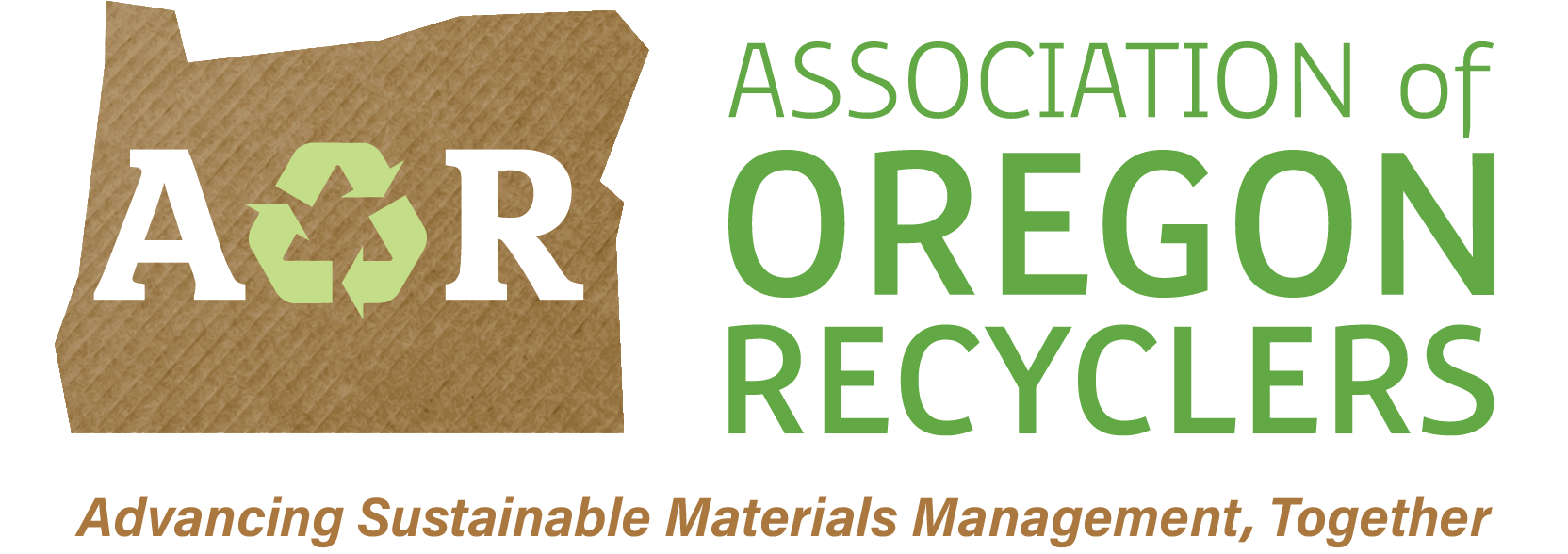Environmental Impacts of Virtual Conference Promotional Products (aka SWAG)
Submitted by Jonathan M. Rivin, Oregon DEQ
If you’ve ever attended a conference, you’ll know that promotional items (e.g., wearables, souvenirs, etc.) , sometimes branded, are ubiquitous. The intent of these freebies – colloquially termed SWAG (Stuff We All Get) – is to recognize sponsoring organizations and enhance attendee experience. Often, conference attendees are given a “gift bag” containing SWAG. While common for in-person gatherings, virtual conferences did not necessarily put a halt to this practice.
Last year I registered for a national conference (conference is intentionally not being identified). As most conferences had either been canceled or transitioned to a virtual format due to the COVID pandemic, this one was virtual. As I had only associated SWAG with in –person attendance previously, I was surprised by a box of “gifts” I received from the conference organizers. But I was also astounded by the number of items, 16, which included electronic/phone/computer accessories, snack food, novelty items, note pad, writing accessories, pastel markers, branded reusable face mask and a portable UV sterilizer.
Giving away unsolicited products is a risky proposition. Satisfying everyone is impossible, as each person has their own interpretation of what is useful or superfluous. Consequently, a great amount of trash from unused products can accrue. Unsolicited promotional products not only may generate a significant amount of “unnecessary” waste, but also wastes resources in the production of the items. In most cases, except for products that require energy/fuel during usage, the greatest environmental impacts occur during product production.
Because of my concerns about adverse environmental impacts from the SWAG I began an investigation. With colleague, Peter Canepa performing the life cycle assessment (LCA), the environmental footprint of the promotional items was determined. The carbon footprint of the gift box was also compared to the carbon footprint of the virtual conference.
The LCA data was transformed into equivalencies so the environmental impacts could be more readily understood. Vehicle miles driven was the reference for all impacts except for water usage, where number of showers was the basis. The equivalencies for 500 gift boxes, the estimated number distributed to conference attendees, are shown below.
|
Environmental Impact Category |
Equivalence of 500 Promotional Boxes |
|
Global Warming Potential |
Driving 7,163 miles |
|
Acidification |
Driving 8,486 miles |
|
Ecotoxicity |
Driving roundtrip to Pluto (7.5 billion miles)* |
|
Eutrophication |
Driving 78,550 miles |
|
Particulate matter |
Driving 170,625 miles |
|
Human toxicity, cancer |
Driving 499 miles |
|
Human toxicity, non-cancer |
Driving 495 miles |
|
Fossil Fuel Resources |
Home electricity usage for 39 days Total household energy usage for 20 days |
|
Smog Formation |
Driving 4,973 miles |
|
Blue Water Consumption |
1343 showers |
* Bring snacks. It’s a long trip
The carbon footprint (i.e., global warming potential) of the 500 gift boxes was estimated to be 40% of the total carbon footprint (conference + gift boxes) of the conference. This result was surprisingly high to me. The carbon footprint of a virtual conference is primarily dependent upon computer usage with the largest contributors being network data transmission emissions, duration of device (e.g., computer) usage and carbon emissions during device life cycle.
Conference organizers may want to consider the environmental footprint of activities associated with the conference. Although virtual conferences have smaller carbon footprints than in-person ones, there is still a need to reduce environmental impacts. Promotional materials provide a clear opportunity to do so.
Although SWAG is not a major contributor to the environmental impacts of human consumption, promotional items are not necessities and are indicative of overconsumption that plagues developed countries. Furthermore, overconsumption is an underlying cause of many crises related to environmental issues of concern, including the climate crisis. Simply reducing the number of promotional products or even eliminating them, will decrease the environmental impacts of the gift box and address the issue of overconsumption.
Additionally, public procurement can play a role in affecting the environmental impacts of human consumption. Public procurement, which is the purchasing of good and services by public authorities, such as the State of Oregon, has tremendous purchasing power, that can be leveraged to influence markets and thus affect the environmental footprint of purchases. Consequently, public procurement has the ability to influence overconsumption as well.
More detailed information about this study is available on the DEQ website.
